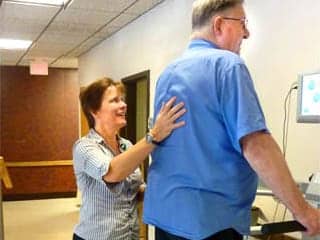Medtronic plc announces the US Food and Drug Administration (FDA) approval and first US implants of the SenSight Directional Lead System used for Deep Brain Stimulation (DBS) therapy.
SenSight is a DBS directional lead designed to combine directionality with sensing, allowing physicians to deliver precise, patient-specific DBS therapy for the treatment of some symptoms associated with movement disorders like Parkinson’s disease, dystonia and essential tremor, and medically refractory epilepsy, a media release from Medtronic plc explains.
“Until now, sensing capability and directional leads have not been available in the same DBS system, so we have had to choose one technology or the other, based on the predicted needs of each patient. Now, by coupling this new directional lead with a pulse generator capable of brain sensing, we are excited to be able to offer our patients the synergistic benefits of both technologies.
“Furthermore, the ability to continuously record brain activity while affected patients go about their daily lives is a powerful research tool that is rapidly improving our understanding of these brain circuitry disorders that diminish the lives of so many people.”
Kelly D. Foote, MD, professor of neurosurgery at University of Florida
DBS is a therapy in which a small pacemaker-like device sends electrical signals through very thin wires, known as “leads,” to a targeted area in the brain related to symptoms of certain neurological disorders. A few weeks after surgery, the neurologist will wirelessly adjust the neurostimulator setting to best control symptoms while minimizing potential side effects in a process known as “programming.”
Enhance Detection of Brain Signals
SenSight is a directional, sensing-enabled lead designed to enhance the detection of local field potentials (LFPs), which are brain signals that correlate with the severity of Parkinson’s disease symptoms and are 1 million times smaller than DBS stimulation pulses. When paired with the Percept PC device, SenSight expands on BrainSense technology, enabling clinicians to capture and record enhanced, directional LFP information from the implanted lead.
When physicians can detect LFPs, they can correlate these brain signals with stimulation and events capturing medication, symptoms, or side effects to deliver personalized, data-driven therapy and adjust this therapy as patient needs evolve, the release explains.
SenSight directional lead systems were first implanted at the University of Florida in early June, and a full launch is being implemented in the US. The product also recently received CE Mark and fully launched in Western Europe in March of 2021.
“We are excited to see the clinical benefits that the new SenSight directional lead system will provide to patients and physicians in the US. For over 25 years, Medtronic has driven discoveries and advancements in DBS therapy and we look forward to continuing to deliver meaningful innovation to the movement disorder and epilepsy patient communities.”
— Mike Daly, vice president and general manager of Brain Modulation within the Neuromodulation business, which is part of the Neuroscience Portfolio at Medtronic
[Source(s): Medtronic plc, PR Newswire]
Related Content:
NIH Grant Funds Development of Epidural Stimulation Software for Spinal Cord Injury
UW Researchers Develop Essential Tremor Treatment That Delivers Targeted Stimulation
Brain-Spinal Interface Appears to Restore Leg Movement in Primates





